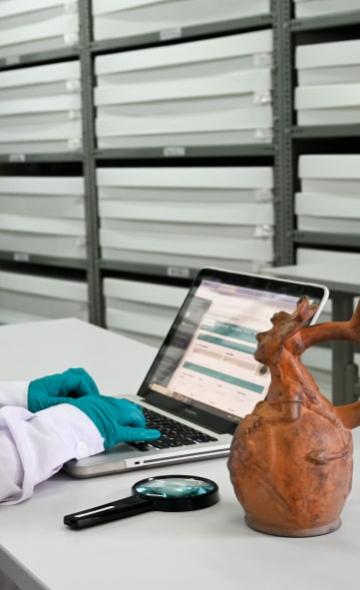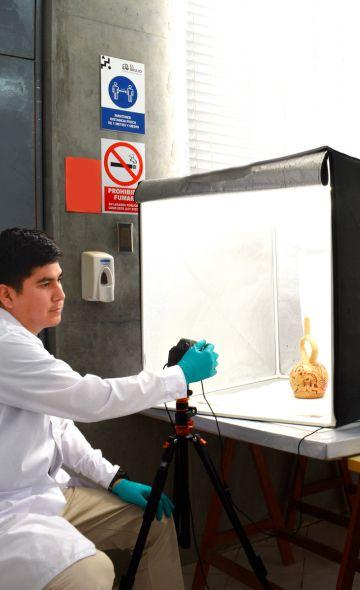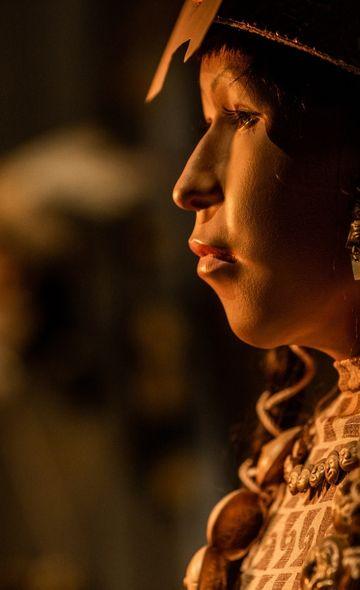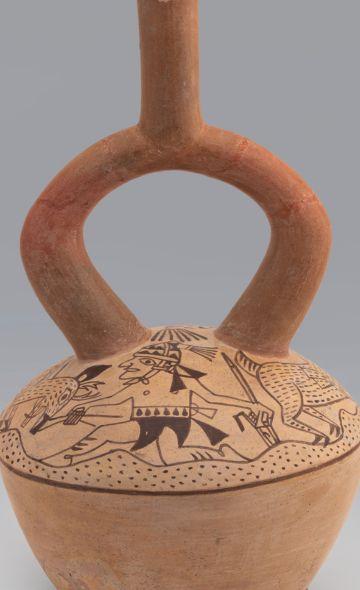- Visitors
- Researchers
- Students
- Community
- Information for the tourist
- Hours and fees
- How to get?
- Visitor Regulations
- Virtual tours
- Classic route
- Mystical route
- Specialized route
- Site museum
- Know the town
- Cultural Spaces
- Cao Museum
- Huaca Cao Viejo
- Huaca Prieta
- Huaca Cortada
- Ceremonial Well
- Walls
- Play at home
- Puzzle
- Trivia
- Memorize
- Crosswords
- Alphabet soup
- Crafts
- Pac-Man Moche
- Workshops and Inventory
- Micro-workshops
- Collections inventory
- News
- Researchers
- The Cataloguing of Ceramics at El Brujo
News
CategoriesSelect the category you want to see:
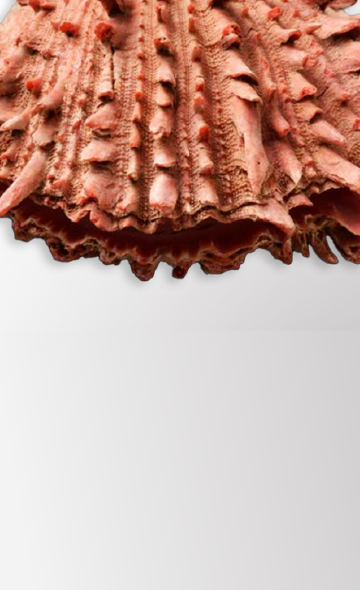
The Use of Spondylus Shells in Moche Ceremonial Contexts: Why Were They Symbols of Status and Wealth? ...
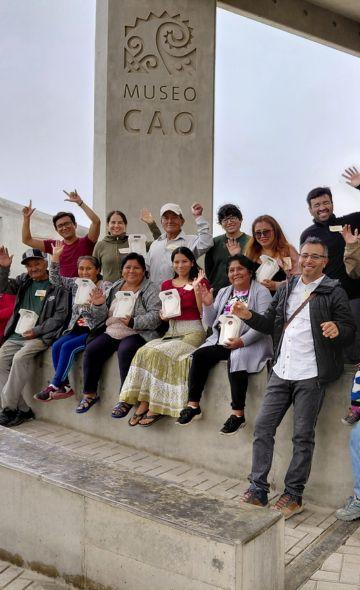
El Brujo Celebrated International Museum Day with Its Community: A Day of Encounter and Cultural Co-Creation ...
To receive new news.
By: Luigui Oliva Mera
As part of the initiatives undertaken by The Wiese Foundation in 2025, the “Comprehensive Cataloguing Project of Museum Objects at the El Brujo Archaeological Complex” is currently underway. This project is the result of cooperation with the Swiss Federal Office of Culture. The co-financing provided by both entities has made it possible to implement this initiative, which strengthens international collaboration mechanisms aimed at the preservation, management, and social use of cultural heritage.
Given its importance, cataloguing is recognized as one of the fundamental pillars of collection management (UNESCO, 2006). It not only allows for a detailed record of the number and diversity of objects housed in the museum, but also contributes to conservation, research and dissemination, ensuring that this information is accessible to all audiences (Figure 1).
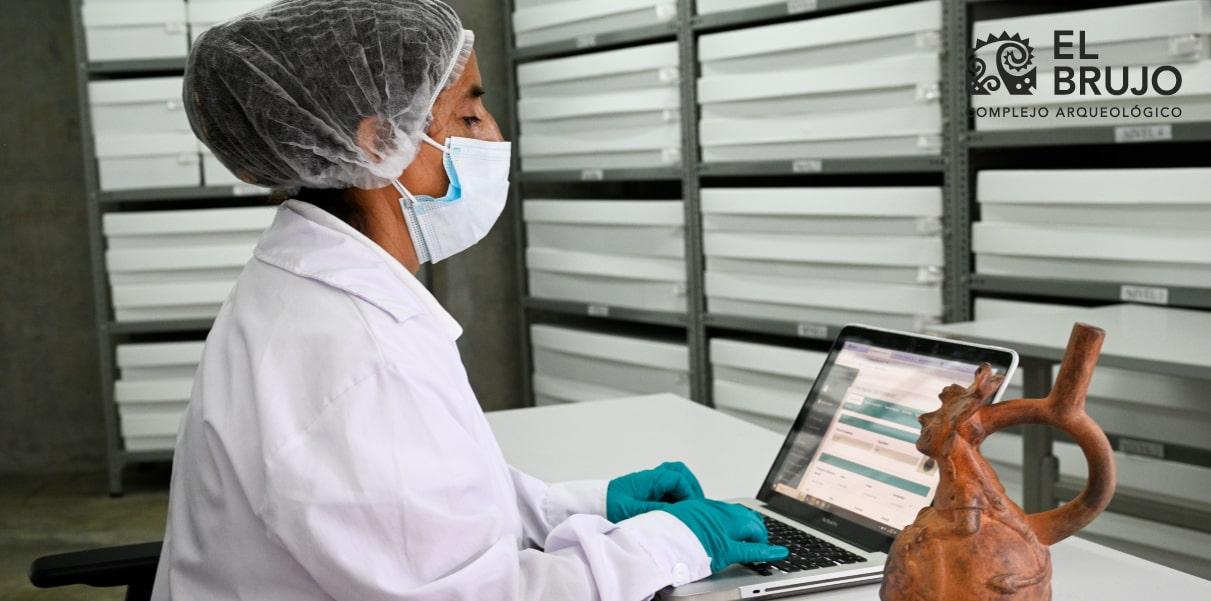
Figure 1: Archaeologist Merly Rosas documenting a Moche-style bottle found at the El Brujo Archaeological Complex.
The role of museums as custodians of the social memory of peoples is expressed through the systematization and rigorous documentation of their collections. Over time, these processes have evolved from manual records in inventory notebooks to digitization through spreadsheets. However, in the context of digital transformation and ongoing technological innovation, museum institutions must adopt advanced solutions that optimize collection management and ensure access to heritage information.
Under this premise, the purpose of this article is to present, in a summarized and accessible manner, the standardized processes implemented at the El Brujo Archaeological Complex (CAEB) for the cataloguing of 4,256 archaeological pieces classified as cultural assets, focusing, on this occasion, on ceramic pieces.
1. What processes make up the cataloguing project at El Brujo?
Basically, there are three processes that are carried out sequentially:
- Documentation:
The archaeological documentation process consists of two stages: inventory and cataloguing. In the inventory stage, the basic information of the archaeological materials is recorded and organized into two main groups: assets and containers. This first stage was completed in 2021, after two years of intensive work that successfully overcame the challenges posed by the pandemic.
Cataloguing, the central focus of this project, encompasses 17 lines of evidence (types of material), with ceramics and processed botanical remains (plates, utensils, containers, etc.) being the most representative, comprising 1,176 and 1,177 specimens, respectively. This information makes it possible to design strategies for the efficient and systematic cataloguing of archaeological assets.
- Photographic Recording:
Once the documentation process is completed, the pieces are photographed in the designated spaces of the CAEB laboratory. In specific cases, when the characteristics of a piece so require (due to its size, weight, fragility or transportation difficulties), a temporary photographic set is installed in situ, either in the museum or in the storage facilities. This process follows defined technical procedures (Fundación Augusto N. Wiese, 2025), which regulate and standardize image capture, views, development, labeling, processing, and uploading to the digital platform.
- Review:
After the previous processes are completed, a detailed review of both the documentation and photographic recording is carried out in order to validate that all information complies with the established guidelines (Fundación Augusto N. Wiese, 2019; Ministry of Culture, 2016).
2. What digital tools do we use?
The tools employed in the cataloguing process are diverse (Adobe Photoshop, Nikon Camera Control Pro, Light Image Resizer 5, among others) and depend on the type of process and activity being carried out. Among them all, the Digital Platform for the Management of Archaeological Collections (PDGCA) (Figure 2), implemented in 2018, plays a central role in the project, as it facilitates the management and contextualization of archaeological assets beyond their exhibition, promoting a comprehensive narrative. Its functionalities go beyond the mere documentary recording of cultural assets, as they automate and streamline operational processes while minimizing any form of human error.
The platform has two interconnected modules: one designed for CAEB staff and another for public access. The first module includes a wide range of tools for the comprehensive management of documentation (field, laboratory and storage), as well as processes related to collections during their storage and exhibition (microclimatic monitoring, automatic label and record generator, bulk adjustments, etc.). This module is in continuous implementation and improvement. The second module, open to the public, is interconnected with the documentary system, allowing all updates, improvements, and new entries to be viewed in real time by the general public.
“The spirit of the PDGCA is to contribute to the democratization of access to culture and to serve as a benchmark for change in the management of archaeological collections in the country.”
.jpg)
3. How do we catalogue ceramics?
Once the processes and tools have been established, we can describe how one of the most frequent and widely recognized types of archaeological objects—ceramics—is catalogued.
The process begins with the creation of a record within the digital platform. This record integrates a series of object-specific data, logically structured according to its category. The cataloguing process must cover mandatory fields: general data, conservation data, registration data, multimedia, exhibitions and bibliographic references.
When we refer to general data, we mean the formal aspects of the piece, such as contextual information, excavation dates, the name of the archaeologist in charge, weight, a description of its physical attributes and location. While all six fields are important, general data contain a central element: contextual information. This refers to the record of its spatial location, technical characteristics of its stratigraphic unit, type of archaeological context, and so on. To give the reader an idea, having a piece without contextual information would be like trying to understand a book with only one of its pages. We may know, in general terms, what it is about, but we would not be able grasp the author’s intended message.
With regard to physical attributes, it should be considered that those responsible for cataloguing must have terminological support as well as a coherent syntax. In this way, the description of objects will follow a structure according to the type of material, without overlooking the particularities of each piece. For the correct use of ceramic terminology, we have taken into account two aspects: (1) the terminology recommended by the Ministry of Culture of Peru and (2) the specialized bibliography corresponding to the cultural asset’s chronological framework. For example, knowing how to differentiate a cántaro (water jar) from an olla (cooking pot) (Figure 3). The former has a taller neck and a narrower opening compared to the olla, which, being in direct contact with fire, usually also shows traces of soot on its surface (Manrique, 2001).
1.jpg)
Why is it important to record all the attributes of a ceramic piece? Because the characteristics or variability of artifacts are linked to chronological (time), chorological (spatial), or socio-economic (social structure) aspects (Barceló, 2009). One example is the “goose-skin” technique, whose production and use became more prominent during the Late Intermediate Period (12th, 13th, and 14th centuries), particularly along Peru’s northern coast in societies such as Lambayeque and Chimú.
In addition, a systematic strategy for recording dimensions is required so that they can be used in future statistical analyses, which in turn allow the identification of patterns that reflect social behaviors. For this purpose, it is important to distinguish between two-dimensional objects, whose measurements include width, length and thickness; and three-dimensional objects, for which additional measurements are recorded, such as height, maximum diameter, minimum diameter and base diameter.
Each piece tells a story not only through its form and decoration, but also by bearing evidence or traces of its production processes (smoothing striations, molding joints, discoloration from firing errors, etc.) and use (soot, wear, localized breakage, pre-Columbian restorations, etc.). The detailed documentation of these details allows us to infer the economic and cultural practices associated with the objects, providing a deeper understanding of their function and historical context (Figure 4).
.jpg)
Finally, it is important to plan in advance the integration between the descriptive aspect and the graphic support (photographic record), taking into account factors such as the size of the vessels and the surface evidence they present. For example, for practical purposes, cataloguing usually begins with medium-sized pieces ranging between 10 and 40 cm, leaving large tinajas (storage jars) for the end, as their handling requires at least two people. Similarly, pieces such as ollas (cooking pots) may retain surface residues such as soot, which are documented at the final stage, since their handling could soil the photographic set and require constant recalibration of the cameras.
The systematic recording of ceramic attributes, combined with coordinated work across all processes, ensures optimal cataloguing, more efficient workflows and a deeper understanding of the objects for the benefit of all (Figure 5).
.jpg)
4. Cataloguing as a means to reduce gaps in access to heritage information
Archaeological cataloguing is a key process for the preservation, research and dissemination of cultural heritage, as it substantially contributes to breaking down barriers that prevent people from knowing, engaging with and reflecting upon it. In this regard, since 2018 the El Brujo Archaeological Complex has been implementing the Digital Platform for Collection Management; an innovative tool that integrates the operational processes of archaeology and museum management. This system seeks to standardize technical procedures while respecting the particularities of each archaeological project and institutional requirements, with the purpose of contributing to the democratization of culture.
To date, the documentary and photographic recording, as well as the review of all ceramic pieces classified as cultural assets, amounting to 1,176 items, has been successfully completed. This valuable information is now available to everyone through the CAEB website (https://www.elbrujo.pe/catalogo/), inviting researchers, specialists, and the general public to explore, share and appreciate the rich heritage of our ancestors.
References
Barceló, J. (2009). Archaeology and Statistics 1. Introduction to the Study of the Variability of Archaeological Evidence. Universitat Autònoma de Barcelona. https://www.academia.edu/70804499/Arqueolog%C3%ADa_y_estad%C3%ADstica_1_
Fundación Augusto N. Wiese. (2019). Protocol for the Management of Archaeological Collections of the El Brujo Archaeological Complex.
Fundación Augusto N. Wiese. (2025). Technical Guidelines for the Cataloguing of CAEB Collections.
Manrique, E. (2001). Guide for the Study and Treatment of Pre-Columbian Ceramics (National Council of Science and Technology).
https://www.academia.edu/44350853/MANRIQUE_PEREYRA_E_2001_Guia_para_un_estudio_y_tratamiento_de_la_ceramica_precolombina_pdf
Ministerio de Cultura (Ministry of Culture) (2016). Procedural Manual for the Computerized System for the Registration of Movable Property Integrating the Cultural Heritage of the Nation.
UNESCO. (2006). Running a Museum: A Practical Handbook (UNESCO, ICOM). https://www.ibermuseos.org/recursos/documentos/como-administrar-un-museo-manual-basico/
Researchers , outstanding news


